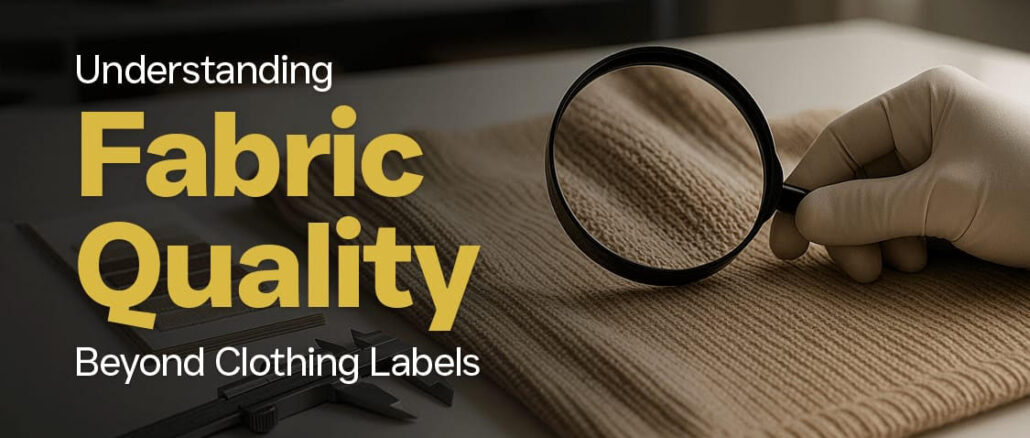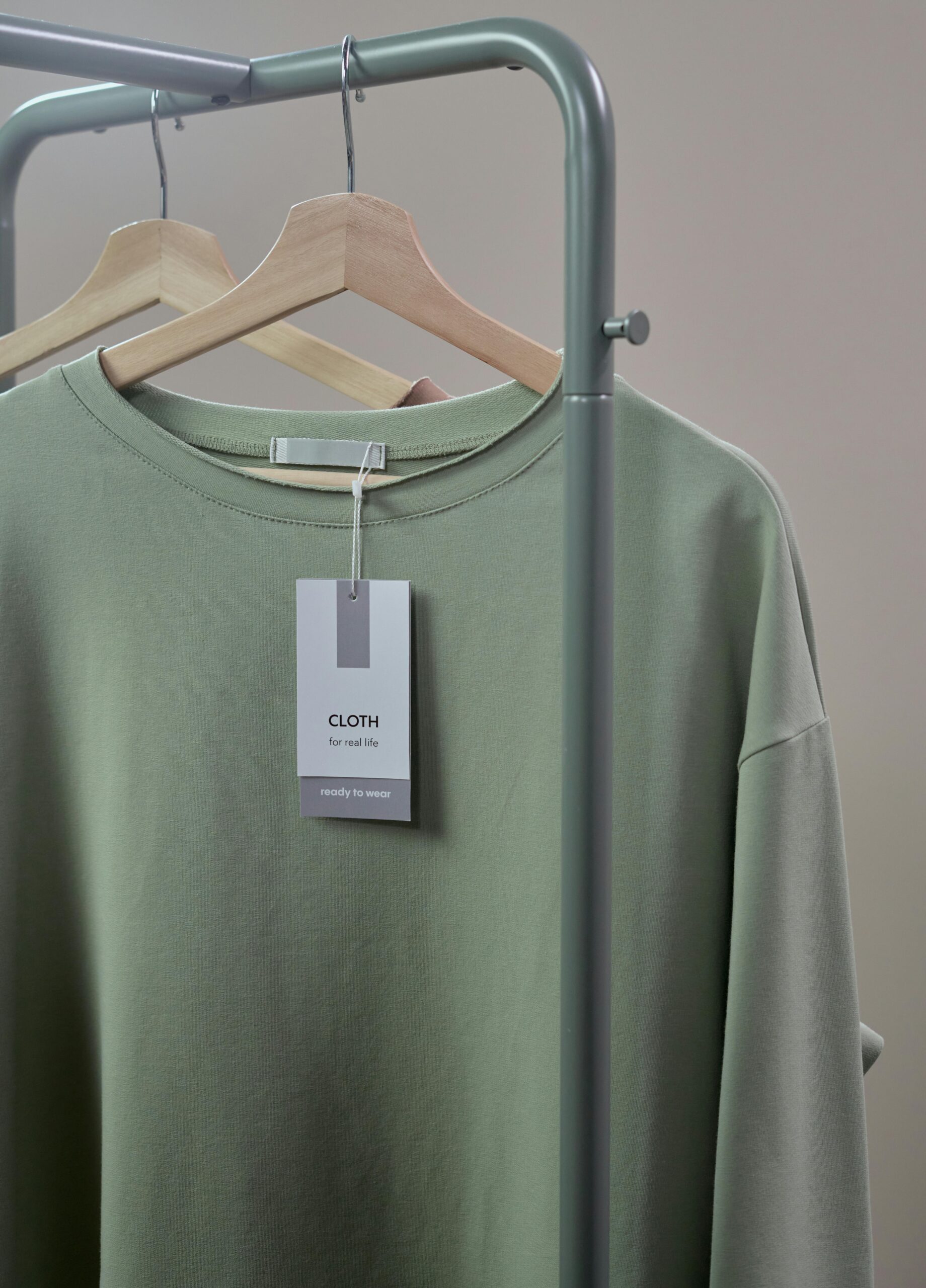
Introduction
Labels are usually read by turning clothes inside out. Clothing and shoe tags tell you how to wash them, their fiber content, and how they were made. But clothing tags don’t always tell you everything about the fabric. For example, the other shirt is soft and airy, while the first one is rough and wears out quickly. Each one says “100% cotton”.
It’s not enough to read the label to determine the quality of the fabric. Weave, weight, finish, and durability indicate quality. People care more about the environment and getting the best deal, so they need to have an understanding of fabric quality beyond clothing labels. You’ve learned to buy better things and support the trend toward longer-lasting, eco-friendlier clothes.
What Clothing Labels and Garment Tags Really Tell You?
Labels are present on every clothing item. There are lots of people who look at this first before they buy something. Labels usually tell you what size something is, what kind of fiber it is (like cotton or polyester), how to clean it, and sometimes even where it was made. People who sell things have to put information about them in some places, like whether they can handle fires or contain allergens. This keeps people safe.
Knowing this helps, but clothing labels don’t define “fabric quality”. Short-staple and long-staple fibers can differ a lot, despite the label “linen.” Fibers make fabric soft and durable. It’s not clear from the garment tags whether “dry clean only” means that the colors will run or the stitching will wear out.
There are simple steps to follow when putting labels and tags on clothes. The rules and what to do are explained to you. The durability, ease of washing, and environmental friendliness of the fabric are seldom discussed. Verify the pattern and the fabric’s quality.
Key Factors That Define Fabric Quality Beyond Labels
There are times when clothing tags say how good the fabric is, but not always. They do say about the fibers and how to take care of them. If someone wants to make a good choice, they should look at more than just the tag message.
Fiber Content vs. Fabric Performance
Even though it says “100% cotton” on the label, cotton comes in many forms. The Egyptian or Pima cotton has long fibers that make it last longer than cotton with short fibers. Some polyester and cotton blends may retain their shape and resist shrinking or wrinkling. It is essential to note that fiber content does not always correlate with performance. Fabrics made from more than one fiber may last longer and be stronger.
Weave and Construction
How the threads are woven together changes both how something feels and how long it lasts. Because it has more threads, twill is stronger than straight weave. There is only one fiber that can be used for this pattern. Different fabrics have more than just different fibers. Denim, satin, and herringbone are some examples. Their manufacturing process is also crucial. Generally speaking, clothing with more substantial weaves will last longer and maintain its shape better.
Fabric Weight and Drape
Weight isn’t always written on the label. However, it is an excellent way to gauge how long something is going to last. Grams per square meter is what GSM stands for. Weight indicates whether the fabric is airy or chunky. Although chiffon is lighter and less durable than denim, both materials have their uses. More important factors are season and clothing hangability.
Touch and Feel Test
Your hands can reveal information that the clothing label cannot. Feeling a fabric with your fingers can reveal its density, smoothness, stretchability, and softness. Fabric that feels rough or thin may degrade faster. A fabric with the right balance of firmness and stretch indicates quality. Regardless of age, tailors and fashion experts use this tactile check because it is highly effective.
Color, speed and Dye Quality
No matter the tags, “machine washable” or “dry clean only,” colors will run or fade. If dyed items are not handled correctly, they may fade after a few washes. Read reviews about the brand’s dye quality or rub a small area with a damp cloth to estimate color longevity.
Why Manufacturers Should Educate Consumers Beyond Tags?
Here’s why manufacturers should educate consumers beyond garment tags –
The Limitations of Clothing Labels

Pic Credit: Pexels
Clothing labels and tags tell you important things, like what kind of fabric it is and how to clean it. There are times when they specify the country in which the clothes were made. Insufficient information is available about the fabric to assess its quality. The process’s duration, materials, and environmental safety are unknown. Due to this discrepancy, people must make decisions with limited information.
Building Consumer Trust
Take the time to let your customers know more about the quality of the fabric. This will help you get to know them better. People will value more than just price if you explain the difference between organic and regular cotton or why a fabric that is tightly woven will last longer than one that is not. Quality is more likely to be important to people who know more about a brand. They will choose innovative brands and stick with honest ones.
Embracing Digital Innovation
Several clothing companies have stopped using paper tags. They use digital tools. People can usually find information about where clothes come from, the certifications, and care tips that help clothes last longer. QR codes can help get information on such garments. As the market is competitive, providing information will help companies look trustworthy.
Promoting Sustainable Choices
“100% cotton” could have been grown without chemicals or with less water. People will know that a business cares about the environment if they know the difference between these terms. People who care about the environment will purchase from brands that are known to care about the world around them.
The Industry-Wide Impact

Pic Credit: Pexel
It’s good for the fashion business as a whole when stores do more than just tag clothes. People who buy clothes that last longer save money, brands get rid of less waste and returns, and the industry moves toward a better future. It’s also essential for fashion companies that people are aware of clothes that are better for the earth, so that they will buy and wear them.
Conclusion
Clothing labels and garment tags are helpful, but they are not comprehensive in their coverage. A fabric’s weight, strength, appearance, and range of applications should all be known. The quality, as well as the upkeep, of fiber is quite crucial. People are better able to comprehend tags now that they are aware of their cost and how they work.
If people look past the brand name, they can find eco-friendly, durable, and better-performing clothing. It helps manufacturers show their integrity and quality, build trust, and share knowledge.
There will be a high demand for those who can produce warm, durable, and environmentally friendly apparel. They will be able to do more than simply read labels. Customers and fashion brands can learn about fabric quality to help companies become more responsible and environmentally friendly.

